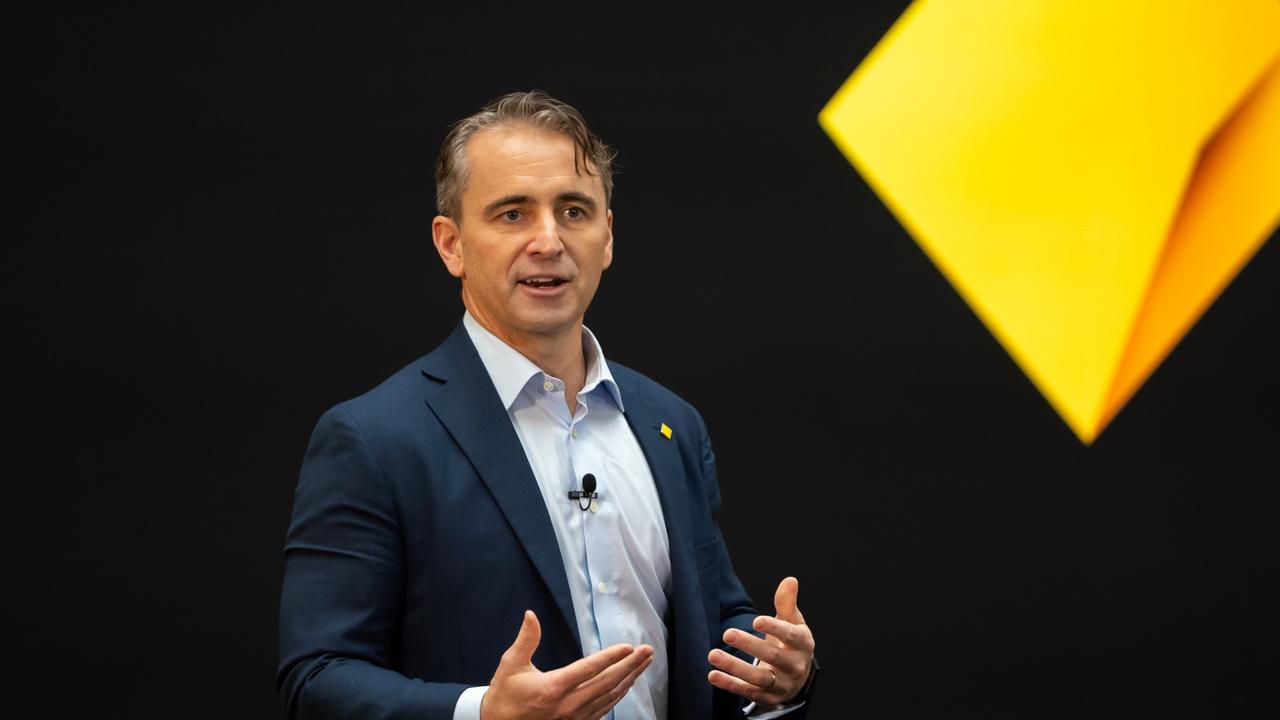Analysts say Westpac could cut its branch network in half
Analysts say Westpac chief financial officer Michael Rowland’s cost reduction blueprint could help accelerate a profit turnaround.

Westpac has one of the best opportunities in the banking sector to drive costs lower and accelerate a profit turnaround, starting with a 45 per cent reduction in its branch network to save $850m across three years, analysts say.
Michael Rowland, chief financial officer of the trouble-prone bank, will present his strategy to reset the group’s cost base at the May 3 half-year result.
Citi analyst Brendan Sproules said in a note that the bank’s current cost base of $10.2bn could be pared back to $8.3bn by focusing on three main areas: moderating expenditure on risk and compliance, optimisation of the branch network, and non-core asset sales.
“We think Westpac should set a 2024 cost target of $8.8bn to account for timing and natural growth,” Mr Sproules said.
Westpac has been in the doldrums for much of the past 12 to 18 months after paying a record $1.3bn penalty for millions of breaches of anti-money laundering legislation. The Austrac debacle resulted in board and management upheaval, as well as heavy and continuing scrutiny by regulators due to the significant failure in risk governance.
Westpac underperformed its rivals as a result of its missteps. Mr Rowland’s cost reduction program is widely viewed as an opportunity to kickstart a recovery.
Rationalisation of bank branch networks has been sweeping across the sector as digital transactions take off, especially in the COVID-19 period.
National Australia Bank chief executive Ross McEwan said this week that 93 per cent of transactions were now digital.
Citi said it had modelled a strategy that could see Westpac’s extensive network of 958 branches slashed from 958 to 518.
However, existing lease arrangements, typically for five years, and community concern about a rapid implementation were likely to see the bank adopt a five-year plan for closures.
As Westpac raced to correct its governance shortcomings, Mr Sproules said spending on risk and compliance could be trimmed by $540m over three years.
“The current spend has been elevated but temporary,” he said.
“While timing is difficult to ascertain, it is reasonable to expect that this investment in risk management will moderate over the next three years (it could be significantly sooner).”
Westpac could remove $850m of operating costs over three years by hiving off five businesses already identified as non-core.
This would not generate the same economic value as specific cost reductions, but the process could refocus the bank’s cost base on to businesses that create shareholder value. Capital would be released and Westpac’s return on equity would be maximised.
Morgan Stanley analyst Richard Wiles presented three alternative scenarios. Westpac could unveil a three-year road map to achieve an $8.5bn cost base for continuing businesses, including anticipated savings and key benchmarks to monitor progress.
The second possibility was a three-year, target cost base of less than $9bn, which would still see expenses above the 2019 level.
Finally, the bank could announce a plan for expenses to be in line or above the 2021 level of $9.3bn to $9.5bn, but not provide a target. Morgan Stanley’s base case was the first scenario, which was estimated to result in a 5 per cent upgrade to 2023 earnings per share and a return on equity of more than 10 per cent.




